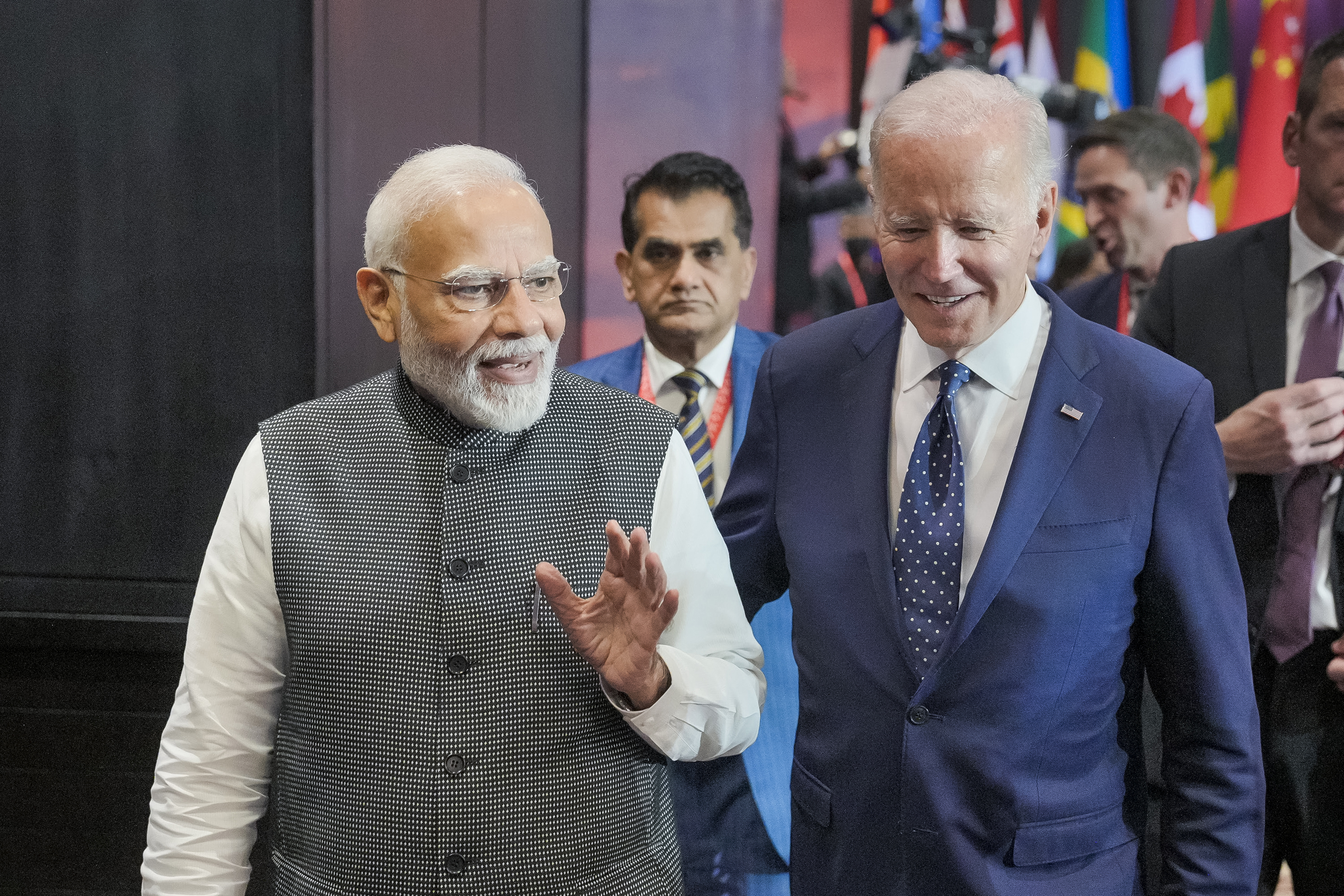Indian prime minister secures work visa changes for skilled workers in US visit

President Joe Biden speaks with Prime Minister of India Narendra Modi at the G20, Tuesday, November 15, 2022, at the Apurva Kempinski in Bali, Indonesia. WHITE HOUSE/Adam Schultz
June 26 (ZFJ) — Indian Prime Minister Narendra Modi, in his recent visit to the United States, and President Joe Biden announced a pilot for the expansion of capacity for H-1B and L-1 visas with the domestic renewal of temporary work visas.
The loosening of visa restrictions aims to increase the amount of skilled workers and students immigrating to the U.S. Currently, this pilot launch is only applicable to the H-1B and L-1 visas, which both admit skilled workers. If the pilot proves successful, the leniency might extend to other visa categories.
THE CURRENT STATE OF THE H-1B AND L-1 PROGRAM
Currently, to be eligible for the H-1B visa, applicants must be workers in specialty occupations, possess a bachelor’s degree or higher, or be offered a temporary working position or an opportunity to study in the United States. The initial time limit on the H-1B visa is three years but it can be extended for up to six years.
As for the L-1 visa, eligibility involves working for a branch of a company based in the U.S. The initial maximum stay for this visa is three years, however, it can be increased in increments of two years.
Data table listing registrations and selections for the H-1B visa from the years 2021 to 2024. U.S. Citizenship and Immigration Services/Screenshot
As of now, both the L-1 and H-1B visas are fairly selective. This year, 127,600 people were accepted out of the 483,927 applicants for the H-1B. The average percentage of acceptance for the H-1B in the past four years is 27.57%.
HOW WILL THE JOINT PLAN CHANGE VISAS?
The joint plan launched by India and the United States will not completely change the visa process for H-1B and L-1 visas. The process to apply will remain the same. However, there will be some minor changes to the criteria to maintain these visas.
The requirement to visit one’s home country to renew a visa will be removed to make visa renewals easier. New visa consulates in India will be opened in Ahmedabad and Bengaluru. The quota numbers for the H-1B visa have been increased for the upcoming year with the release of the pilot. Additionally, the plan will allow H-1B holders to appeal for visa renewals and extensions while remaining in the U.S.
The effects of the lenient new plan are evidenced by the numbers for the 2024 H-1B visa. The upcoming year has the highest visa acceptance rates of the decade with 44.8% percent of applicants being accepted compared to the average of 27.57%.
WHY PRIME MINISTER MODI?
Being the leader of India, the visa issue is particularly pertinent to Indian immigrants. Given that, in the year 2019, 74.5% of the total H-1B applicants were from India, the issue of visas is most relevant to Prime Minister Modi.
References
- White House - Joint Statement from the United States and India - https://www.whitehouse.gov/briefing-room/statements-releases/2023/06/22/joint-statement-from-the-united-states-and-india/ (ARCHIVE)
- U.S. Department of Labor - H-1B Program - https://www.dol.gov/agencies/whd/immigration/h1b (ARCHIVE)
- U.S. Citizenship and Immigration Services - H-1B Authorized-to-Work Population Estimate - https://www.uscis.gov/sites/default/files/document/reports/USCIS%20H-1B%20Authorized%20to%20Work%20Report.pdf
- U.S. Citizenship and Immigration Services - L-1A Intracompany Transferee Executive or Manager - https://www.uscis.gov/working-in-the-united-states/temporary-workers/l-1a-intracompany-transferee-executive-or-manager (ARCHIVE)
- U.S. Citizenship and Immigration Services - H-1B Electronic Registration Process - https://www.uscis.gov/working-in-the-united-states/temporary-workers/h-1b-specialty-occupations-and-fashion-models/h-1b-electronic-registration-process (ARCHIVE)
